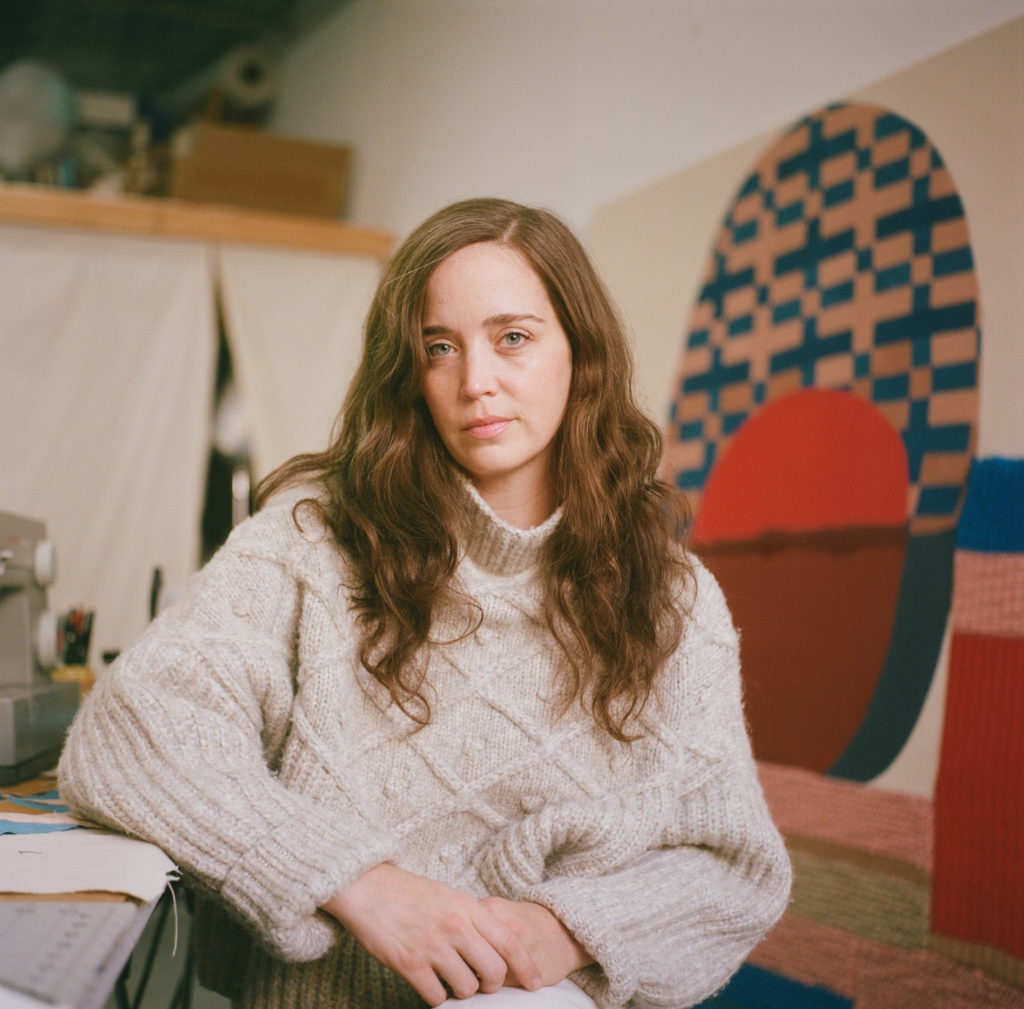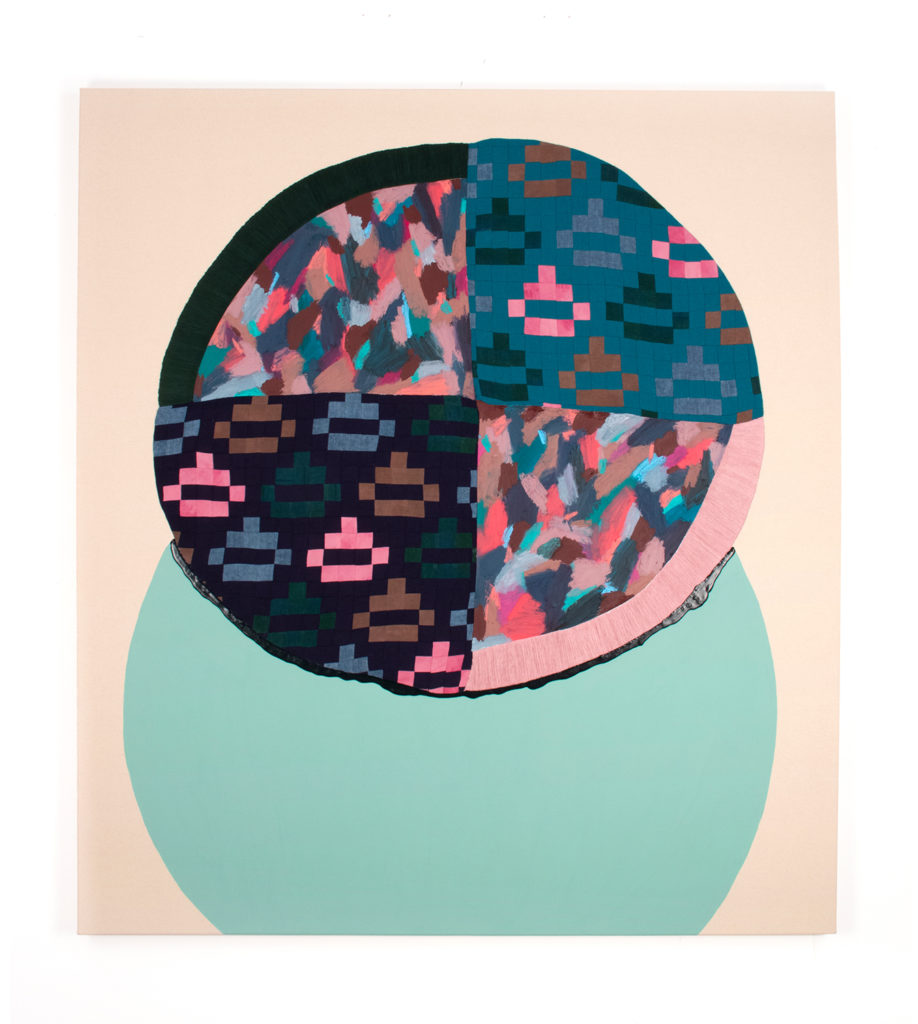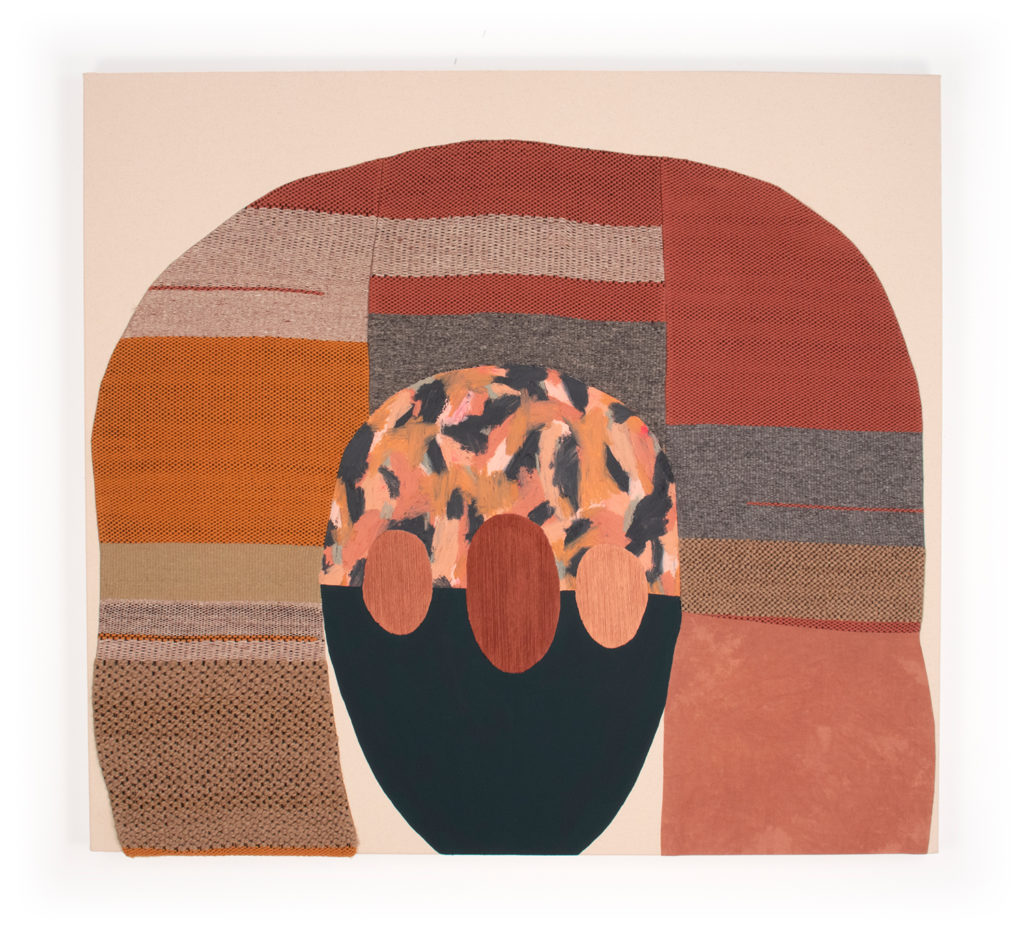
By Katy Donoghue, July 7, 2021
Amanda Valdez’s “Gratitude” was recently on view at Denny Dimin Gallery in New York (April 2-May 15). The solo exhibition presented a body of new work, showcasing the artist’s recent introduction of weaving into her practice and the surface of the canvas. Integrating the language and histories of textile and painting, Valdez’s abstract works explore color, pattern, shape, and texture.
The show’s title refers to the New York-based artist’s years-long practice of writing and sharing gratitude lists with her community. As a gesture in recognition of the trauma we’ve all experienced over the past year due to the ongoing COVID-19 pandemic, Valdez included a gratitude list for visitors as a way to connect and offer comfort.
Whitewall spoke about weaving, compartmentalization, and lessons learned with Valdez, whose Sweet Trouble (2020) is part of the group exhibition “Fringe” opening tomorrow, July 8, at Denny Dimin Gallery.
WHITEWALL: What was the starting point for “Gratitude”?
AMANDA VALDEZ: I was turning my focus to my show for April and evaluating my studio practice after having a child. A big part of my studio practice has been going away to do residencies. Since having a child, I knew I would be taking a pause on that. Oftentimes, residencies are where I would make a lot of breakthroughs. For me, I really become one with the work. The boundaries between me and my work slip away. There are all kinds of new things that happen, whether I’m introducing a new medium or something new in the compositions excites me—I can work off of that for a long time.
So, a year in of not doing a residency, I thought about incorporating weaving into my work. It’s very important to me how I bring materials into the surface of painting. All of my quilting, dyed fabrics, and commercially sourced fabric are sewn into the canvas, they are not collaged on top. For me, that is a way of bringing these two histories together and making them equal—the history of painting being very male dominated and the history of textile being very female dominated.
 WW: What interested you in weaving?
WW: What interested you in weaving?
AV: With weaving it posed the opportunity to get even further into the surface of a painting. I have had different experiments over the years. I never want to rush something into my work. I decided I would take the energy and resources I would usually take into a residency and apply them into my studio for weaving. While not every painting has weaving in it, some reference weaving and then other pieces exist as their own thing.
I really wanted to challenge the work to fully investigate as many of the different questions I had about weaving, the different approaches, different types of weaving. That was the big push for this body of work.
I’m starting to find how to make my own language and keep my abstract language, feeling like it can engage with the history of weaving at the same time. I really love looking at the things that humans have made over a large period of time. In weaving we have samples that go back so far. If I can connect my hands that are making with these other hands that are making, that always activates my imagination.

WW: You said that you were evaluating your studio practice after having a child. Aside from not being able to do a residency, did you notice a perspective shift at all in your work after having your child?
AV: I think it was a shift that was happening since I was pregnant. As far as image-making, I noticed a shift in my shapes. When I was pregnant, the circle really became prominent in my work. I was using them to play around with other more central shapes. There were things that were squished or balanced on.
In my latest show, all the circles have emigrated into the shape—before they were all outside of the shape. I think that they represent that a feeling of being so compartmentalized, especially with so much being frantic over this last year. One moment I’m a mom and super present, the next minute I’m in my studio super present, the next I’m alone taking a run and I can be that person. I think that in some ways—and I don’t have my head fully wrapped around it—but they stand in for some type of psychic shift that has happened in how you navigate yourself within a new family unit.

WW: The exhibition title, “Gratitude,” refers to a practice of yours, writing and sharing gratitude lists. Has that always been a part of your daily life?
VA: No, it’s been a practice over the last five years. I’ve had this practice with a group of women where we share lists on email regularly. It’s been so beneficial to share them, and also to receive them.
I felt like with the pandemic I was hearing more and more people talk about gratitude as a means to help them get through. And for the show, I wanted to give something to the viewer. We’ve all been through so much, so I wanted to offer this to people because it seemed like it could be a good moment for someone to receive it.

WW: Do you see your gratitude practice in relation to your studio practice?
VA: Definitely. I think that gratitude is a way of being grounded in hard times, and going to the studio and being an artist is not easy. There’s a lot of things that are very hard and my work asks a lot of things of me. One of the pieces has over 100 hours of embroidery. But the pleasure that I get out of seeing what happens with the accumulation of all that labor is so palpable. That’s what gratitude is, that accumulation of perspective. You can see the gifts of hindsight. It allows you to see the beauty of the lessons you end up learning from the hard things.

